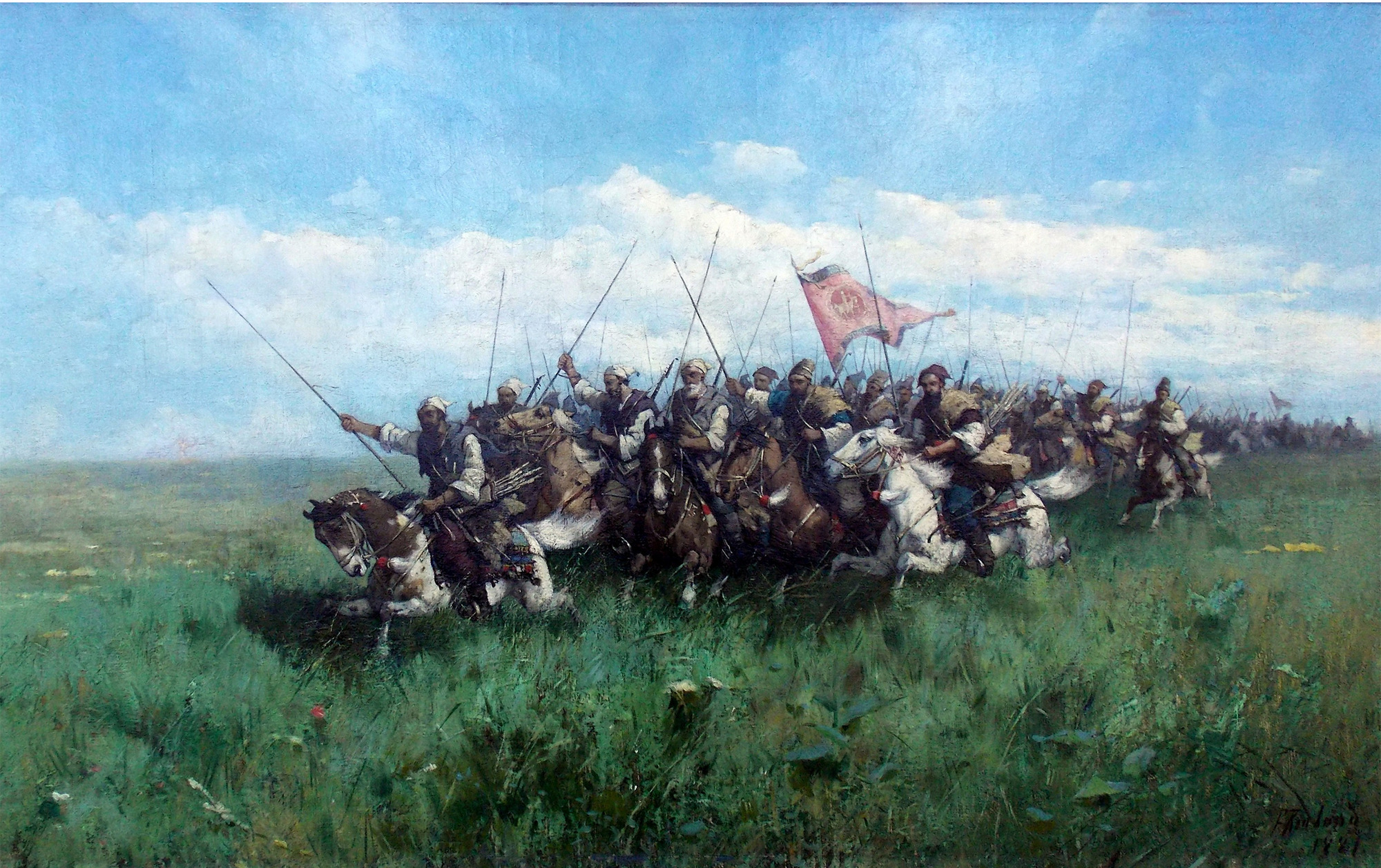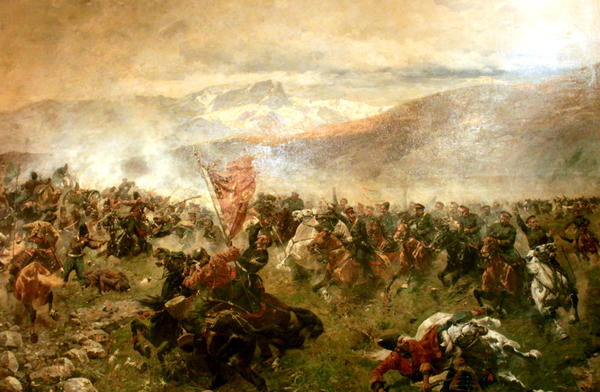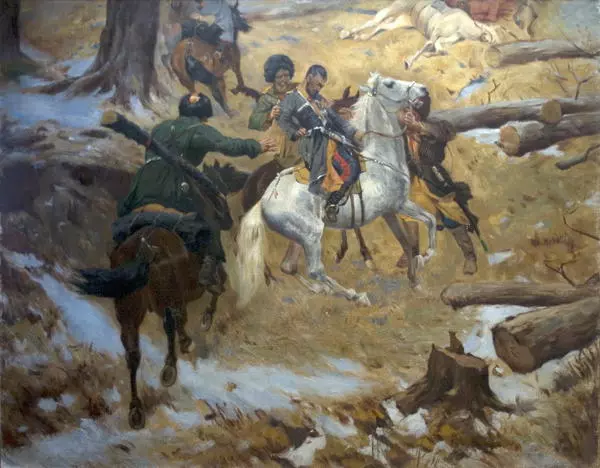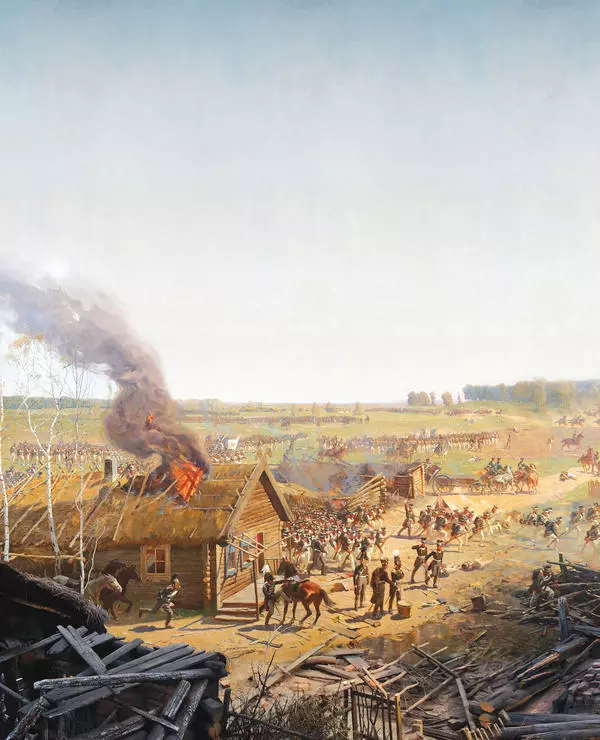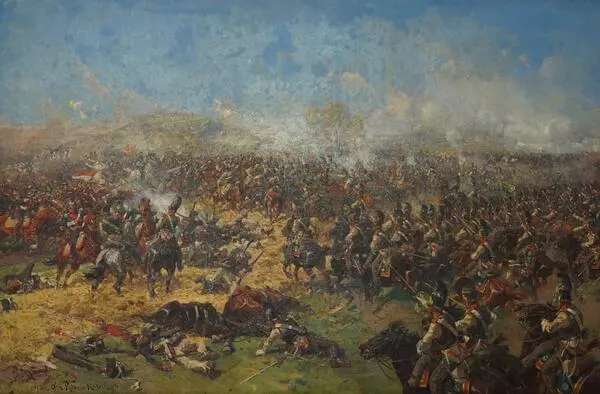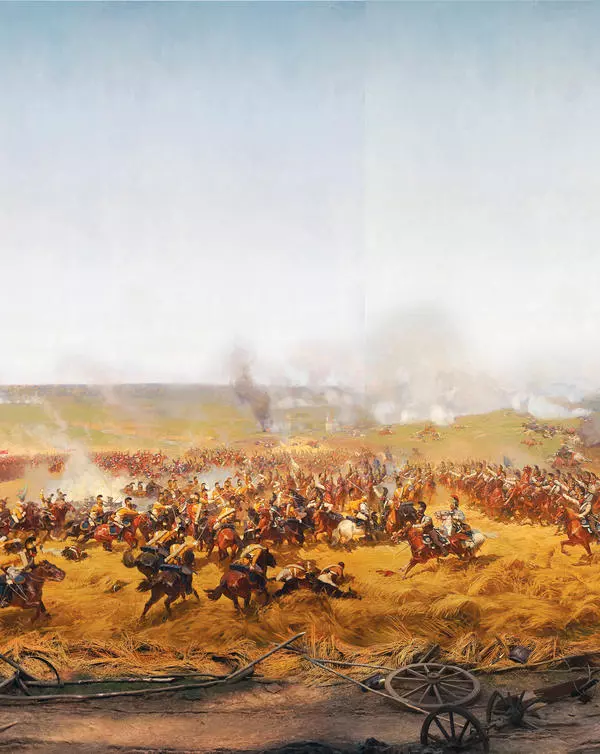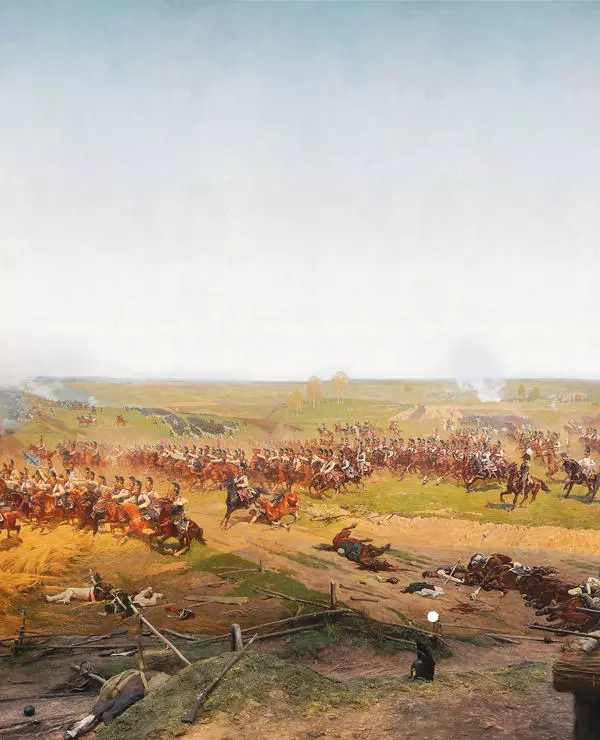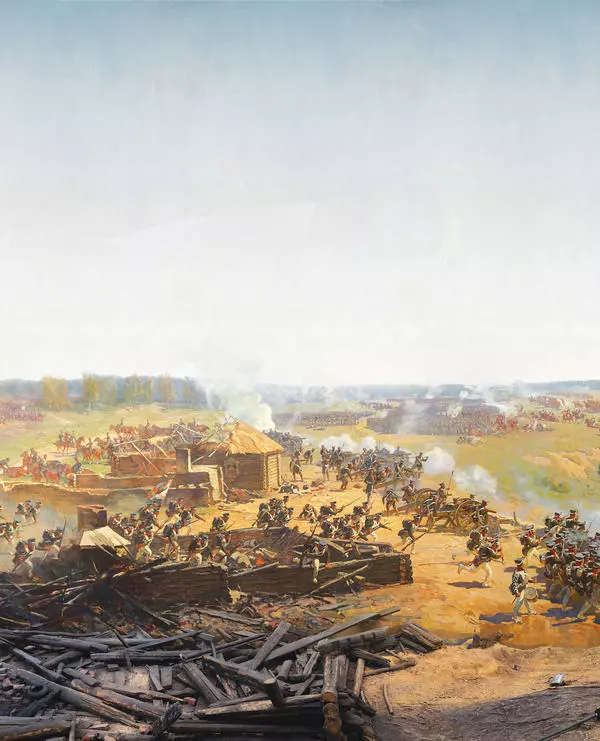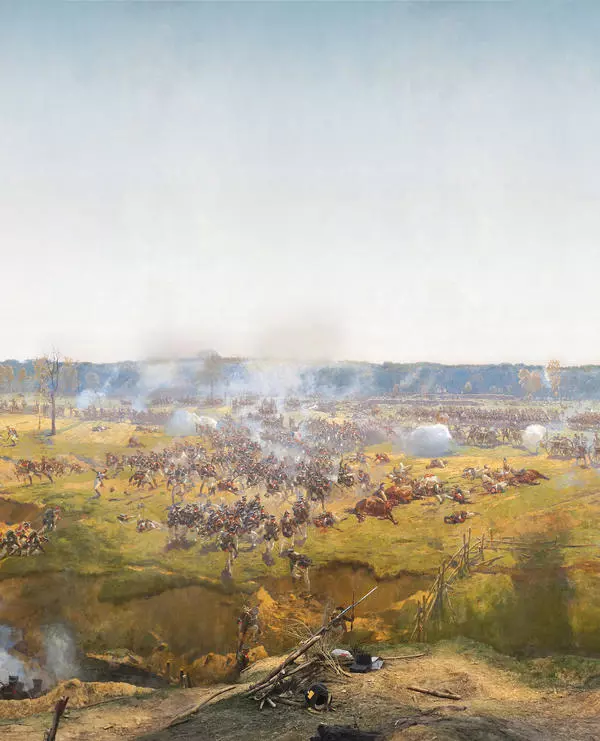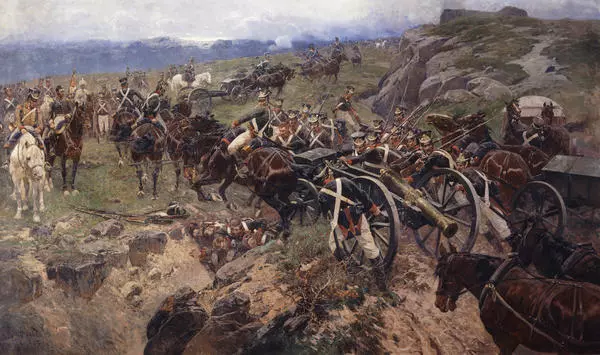Franz Roubaud painted The Battle at Kuruk-Dara in 1900. He reproduced it from his another painting of the same name done in 1888. The first piece was part of a series of works on Caucasian wars. The author created the cycle for the Temple of Glory museum in Tiflis.
The Battle at Kuruk-Dara is devoted to the Crimean war of 1853-1856. Kuruk-Dara is a settlement in Turkish Armenia, nearby which a battle between a 60 thousand strong army of the Ottoman Empire and an 18 thousand strong party of the Russian Empire took place on 5 August 1854. Despite the numerical superiority, the Turkish army was defeated in the action.The Battle at Kuruk-Dara is devoted to the Crimean war of 1853-1856. Kuruk-Dara is a settlement in Turkish Armenia, nearby which a battle between a 60 thousand strong army of the Ottoman Empire and an 18 thousand strong party of the Russian Empire took place on 5 August 1854. Despite the numerical superiority, the Turkish army was defeated in the action.

